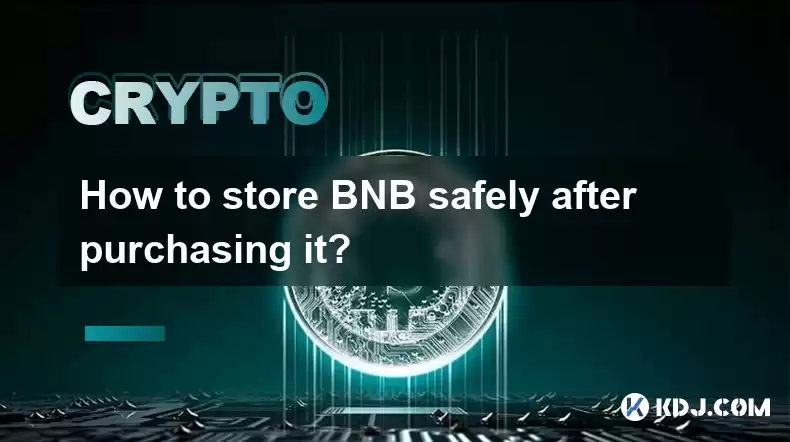-
 Bitcoin
Bitcoin $119300
1.07% -
 Ethereum
Ethereum $3730
3.87% -
 XRP
XRP $3.235
0.29% -
 Tether USDt
Tether USDt $1.000
0.00% -
 BNB
BNB $783.5
1.88% -
 Solana
Solana $188.7
0.25% -
 USDC
USDC $0.0000
-0.01% -
 Dogecoin
Dogecoin $0.2399
-0.44% -
 TRON
TRON $0.3157
2.37% -
 Cardano
Cardano $0.8254
1.94% -
 Hyperliquid
Hyperliquid $42.83
0.14% -
 Stellar
Stellar $0.4372
3.21% -
 Sui
Sui $3.859
4.91% -
 Chainlink
Chainlink $18.53
3.53% -
 Hedera
Hedera $0.2464
0.01% -
 Bitcoin Cash
Bitcoin Cash $519.8
2.46% -
 Avalanche
Avalanche $24.24
2.17% -
 Litecoin
Litecoin $113.7
0.73% -
 UNUS SED LEO
UNUS SED LEO $8.990
0.30% -
 Shiba Inu
Shiba Inu $0.00001390
0.21% -
 Toncoin
Toncoin $3.188
1.49% -
 Ethena USDe
Ethena USDe $1.001
0.02% -
 Polkadot
Polkadot $4.090
-0.91% -
 Uniswap
Uniswap $10.40
4.08% -
 Monero
Monero $326.6
3.12% -
 Bitget Token
Bitget Token $4.627
-0.42% -
 Pepe
Pepe $0.00001281
0.76% -
 Dai
Dai $1.000
0.01% -
 Aave
Aave $291.6
0.98% -
 Cronos
Cronos $0.1269
7.26%
How to store BNB safely after purchasing it?
To safely store BNB, use hardware wallets like Ledger or Trezor, enable 2FA, and keep software updated to protect your investment from theft and unauthorized access.
Apr 21, 2025 at 09:35 am

Storing BNB (Binance Coin) safely after purchasing it is crucial to protect your investment. Understanding the best practices and tools available can help you secure your BNB effectively. This article will guide you through the process of storing BNB safely, covering various methods, security measures, and tips to ensure your digital assets remain secure.
Understanding BNB and Its Importance
BNB is the native cryptocurrency of the Binance ecosystem, one of the largest and most influential cryptocurrency exchanges in the world. BNB is used for various purposes within the Binance platform, including paying for trading fees, participating in token sales, and more. Given its significance, safely storing BNB is essential to protect your investment from theft, loss, or unauthorized access.
Choosing the Right Wallet for Storing BNB
To store BNB safely, you need to choose an appropriate wallet. There are several types of wallets available, each with its own set of features and security levels. Here are the main types of wallets you can use for storing BNB:
- Hardware Wallets: These are physical devices designed to store cryptocurrencies offline, making them highly secure. Popular hardware wallets for storing BNB include Ledger and Trezor.
- Software Wallets: These are applications that you can install on your computer or mobile device. Examples include Trust Wallet and MetaMask.
- Web Wallets: These are online wallets provided by exchanges or third-party services. Binance itself offers a web wallet for storing BNB.
- Paper Wallets: These involve printing your private keys and public addresses on paper, which can be stored offline.
Setting Up a Hardware Wallet for BNB
Hardware wallets are considered the most secure option for storing BNB. Here’s how to set up a hardware wallet like Ledger or Trezor:
- Purchase the Hardware Wallet: Buy a Ledger or Trezor device from their official websites or authorized resellers.
- Initialize the Device: Follow the instructions provided with the device to set it up. This usually involves connecting it to your computer and following the on-screen prompts.
- Create a New Wallet: When prompted, create a new wallet. You will be given a recovery phrase, which is a series of words that you must write down and store in a secure location. This recovery phrase is crucial for accessing your wallet if you lose your device.
- Install the BNB App: On your Ledger or Trezor device, install the Binance Chain or Binance Smart Chain app, which allows you to manage BNB.
- Transfer BNB to Your Wallet: Use the public address provided by your hardware wallet to transfer BNB from your exchange or another wallet to your hardware wallet.
Using Software Wallets to Store BNB
Software wallets offer a convenient way to store BNB, though they are generally less secure than hardware wallets. Here’s how to set up a software wallet like Trust Wallet:
- Download and Install the Wallet: Visit the official website of Trust Wallet and download the app for your mobile device or computer.
- Create a New Wallet: Open the app and follow the instructions to create a new wallet. You will be given a recovery phrase, which you should write down and store securely.
- Add BNB to Your Wallet: In Trust Wallet, you can add BNB by selecting it from the list of supported cryptocurrencies. The app will generate a public address for receiving BNB.
- Transfer BNB to Your Wallet: Use the public address provided by Trust Wallet to transfer BNB from your exchange or another wallet to your Trust Wallet.
Securing Your BNB with Multi-Signature Wallets
For added security, you can use multi-signature wallets, which require multiple private keys to authorize a transaction. Here’s how to set up a multi-signature wallet for BNB:
- Choose a Multi-Signature Wallet: There are several multi-signature wallet options available, such as Gnosis Safe, which supports BNB.
- Set Up the Wallet: Follow the instructions on the chosen platform to set up a multi-signature wallet. You will need to create multiple private keys and set the number of signatures required for transactions.
- Transfer BNB to Your Multi-Signature Wallet: Use the public address provided by your multi-signature wallet to transfer BNB from your exchange or another wallet.
Best Practices for Safely Storing BNB
Regardless of the type of wallet you choose, following best practices can significantly enhance the security of your BNB. Here are some key practices to keep in mind:
- Use Strong Passwords: Always use strong, unique passwords for your wallet and any associated accounts. Consider using a password manager to generate and store complex passwords.
- Enable Two-Factor Authentication (2FA): Whenever possible, enable 2FA on your wallet and exchange accounts. This adds an extra layer of security by requiring a second form of verification to access your accounts.
- Keep Your Software Updated: Regularly update your wallet software and any related applications to protect against known vulnerabilities.
- Backup Your Recovery Phrase: Store your recovery phrase in a secure, offline location. Never share your recovery phrase with anyone.
- Be Wary of Phishing Attempts: Be cautious of emails, messages, or websites that ask for your private keys or recovery phrase. Always verify the authenticity of any request for information.
Frequently Asked Questions
Q: Can I store BNB on an exchange safely?
A: While it is possible to store BNB on an exchange, it is generally not recommended for long-term storage. Exchanges are more vulnerable to hacks and security breaches compared to personal wallets. If you must store BNB on an exchange, ensure that the exchange has robust security measures in place and consider using a cold storage option for larger amounts.
Q: What should I do if I lose my hardware wallet?
A: If you lose your hardware wallet, you can recover your BNB using the recovery phrase you wrote down during the setup process. Use the recovery phrase to restore your wallet on a new device or through a compatible software wallet.
Q: Is it safe to store BNB on a paper wallet?
A: Storing BNB on a paper wallet can be safe if you follow proper security measures. Ensure that you store the paper wallet in a secure, fireproof, and waterproof location. Additionally, be cautious when transferring BNB from a paper wallet, as you will need to expose your private keys to the internet.
Q: How often should I move my BNB to a new address?
A: There is no strict rule on how often you should move your BNB to a new address. However, if you are concerned about privacy and security, you might consider moving your BNB to a new address periodically, such as every few months. This can help protect your anonymity and reduce the risk of your address being compromised.
Disclaimer:info@kdj.com
The information provided is not trading advice. kdj.com does not assume any responsibility for any investments made based on the information provided in this article. Cryptocurrencies are highly volatile and it is highly recommended that you invest with caution after thorough research!
If you believe that the content used on this website infringes your copyright, please contact us immediately (info@kdj.com) and we will delete it promptly.
- MoonBull's Presale Heats Up: Community Interest and Meme Coin Mania
- 2025-07-25 04:30:12
- Ripple's RLUSD: Stablecoin Ascends to #1 Most Trusted Amidst Regulatory Shifts
- 2025-07-25 04:30:12
- Binance, Circle, and USYC: Bridging the Gap Between Crypto and Traditional Finance
- 2025-07-25 02:30:12
- Park Gyuri, Pica Coin, and Crypto Fraud: A K-Pop Scandal Unfolds
- 2025-07-25 03:50:13
- Ruvi AI: The Avalanche Threat or Next Big Thing?
- 2025-07-25 03:50:13
- Anna K's Bold Vision at Token Creek: A Theater Production That Dares
- 2025-07-25 03:55:12
Related knowledge

What is Chainlink (LINK)?
Jul 22,2025 at 02:14am
Understanding Chainlink (LINK): The Decentralized Oracle NetworkChainlink is a decentralized oracle network designed to bridge the gap between blockch...

What is Avalanche (AVAX)?
Jul 22,2025 at 08:35am
What is Avalanche (AVAX)?Avalanche (AVAX) is a decentralized, open-source blockchain platform designed to support high-performance decentralized appli...

What is Polkadot (DOT)?
Jul 19,2025 at 06:35pm
Understanding the Basics of Polkadot (DOT)Polkadot (DOT) is a multi-chain network protocol designed to enable different blockchains to transfer messag...

What is Litecoin (LTC)?
Jul 23,2025 at 11:35am
Overview of Litecoin (LTC)Litecoin (LTC) is a peer-to-peer cryptocurrency that was created in 2011 by Charlie Lee, a former Google engineer. It is oft...

What is Monero (XMR)?
Jul 21,2025 at 10:07am
What is Monero (XMR)?Monero (XMR) is a decentralized cryptocurrency designed to provide enhanced privacy and anonymity for its users. Unlike Bitcoin a...

How to add indicators to Ethereum chart on TradingView?
Jul 19,2025 at 07:15am
What Is an Ethereum Chart on TradingView?The Ethereum chart on TradingView is a visual representation of the price movement of Ethereum (ETH) over a s...

What is Chainlink (LINK)?
Jul 22,2025 at 02:14am
Understanding Chainlink (LINK): The Decentralized Oracle NetworkChainlink is a decentralized oracle network designed to bridge the gap between blockch...

What is Avalanche (AVAX)?
Jul 22,2025 at 08:35am
What is Avalanche (AVAX)?Avalanche (AVAX) is a decentralized, open-source blockchain platform designed to support high-performance decentralized appli...

What is Polkadot (DOT)?
Jul 19,2025 at 06:35pm
Understanding the Basics of Polkadot (DOT)Polkadot (DOT) is a multi-chain network protocol designed to enable different blockchains to transfer messag...

What is Litecoin (LTC)?
Jul 23,2025 at 11:35am
Overview of Litecoin (LTC)Litecoin (LTC) is a peer-to-peer cryptocurrency that was created in 2011 by Charlie Lee, a former Google engineer. It is oft...

What is Monero (XMR)?
Jul 21,2025 at 10:07am
What is Monero (XMR)?Monero (XMR) is a decentralized cryptocurrency designed to provide enhanced privacy and anonymity for its users. Unlike Bitcoin a...

How to add indicators to Ethereum chart on TradingView?
Jul 19,2025 at 07:15am
What Is an Ethereum Chart on TradingView?The Ethereum chart on TradingView is a visual representation of the price movement of Ethereum (ETH) over a s...
See all articles

























































































